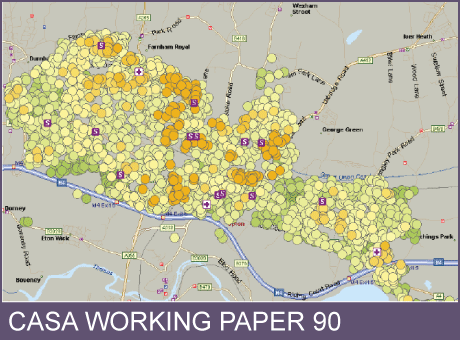CASA Working Paper 90

1 November 2004
Neighbourhood Inequalities in the Patterns of Hospital Admissions and their Application to the Targeting of Health Promotion Campaigns
For many years indicators of deprivation have played a pivotal role in the process whereby government assesses the relative level of resources require to meet local health needs. The formulae that have been developed for this purpose recognise that the local level of need for health resources varies among different population groups, such as the elderly or people with young children. The formulae also recognise the strength of the relationship between health and deprivation. Over a hundred years ago public health officials first recognised differences in the rates of mortality among different occupations. Likewise today's funding formulae recognise the especial needs of local areas with high proportions of particularly deprived groups such as overcrowded households, persons without access to a car or people who are unemployed.
As the focus of the health service increasingly extends beyond the treatment of patients to an attempt to improve the health of local populations through preventative campaigns, the focus of targeting extends likewise to the identification of neighbourhoods at highest risk of particular diagnoses. To this end the National Health Service has recently commissioned a number of pilot exercises to assess the effectiveness of postcode classification systems in the targetting of health promotiona l material. In order to assess which types of neighbourhood are most suitable for specific communications programmes, the Hospital Episode Statistics have recently been coded by Mosaic, the UK's most widely used postcode classification system. This paper summarises the key differences that have been found to exist between these Mosaic types, both in terms of overall level of admissions and type of diagnosis. The paper also evaluates the extent to which the classification system may be an efficient method not just of targeting specific health campaigns but also for assessing levels of need by type of service at a highly local level.
This working paper is available as a PDF. The file size is 403KB.
Authors: Richard Webber
Publication Date: 1/11/2004
 Close
Close

